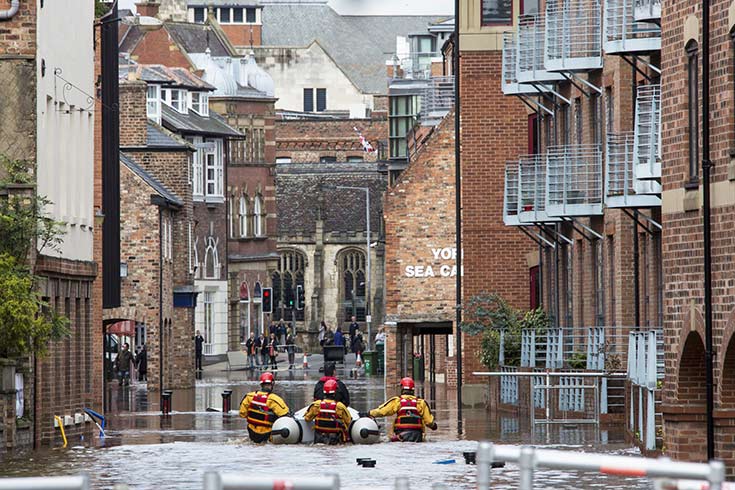National Flood Resilience Review in the UK
The National Flood Resilience Review was established in January 2016 to assess how the UK can be better protected from future flooding and extreme weather events such as during December 2015, reports Roger Gomm for CRJ.

Flooding in Yorkshire, England, 2012 (Steve Allen / 123rf)
The review was chaired by the then Chancellor of the Duchy of Lancaster, with a team including Cabinet Office, Defra, the Environment Agency, the Met Office, and the government’s Chief Scientist. The key areas of this review were to:
-
Understand the risks of river and coastal flooding from extreme weather over the next 10 years
-
Assess the resilience of key local infrastructure (such as energy, water, transport and communications), and identify ways to protect it better
-
Improve how we respond to flood incidents, including through new temporary flood defences
Over recent years the UK has been hit by a number of extreme flood events in Somerset, Cumbria, Yorkshire and elsewhere. Record rainfall and river levels have led to widespread floods severely affecting cities and communities, bringing misery to the lives of thousands and seriously disrupting businesses and livelihoods. Communities have lost power, water and telecoms during the flooding, and have then had to deal with the lengthy process of recovery. It is clear that we will see further events of a similar, or maybe even greater, scale over the next decade.
Although national and local government have already taken action to improve protection to flooding, in the light of the severity of recent incidents, and the risk that these or similar events will occur again, it is essential that the UK reconsiders the approach to assessing flood risk.
One key area is better management of rainfall in the natural environment. Water is a precious resource which, at many times and in many places, is in increasingly short supply. There are obvious benefits to managing water in a way that reduces flood risk delivers wider environmental benefits, by slowing the flow of water from the land into our rivers and smoothing the flow of the rivers themselves. A pioneer pilot project in Cumbria in Northern England will test and demonstrate the power of this approach across the different river catchments there.
One of the key findings from the report was how flood risk is defined in the national and local risk assessments. Describing flood risk in traditional terms such as a ‘one per cent chance of flooding’ or ‘one in a 100 year risk’ is not helpful. They do not describe the chance of one of these events happening somewhere in the country or region in a given year – which is much greater. Nor do they describe the impact on people and on the economy when events that have previously been regarded as very unlikely do sometimes happen (as this winter’s rain in the UK showed).
The reports completed preliminary assessment of the resilience of each piece of key local infrastructure around the country including assets (such as energy, water, health, transport and telecommunications) on which services to communities and businesses depend.
In the UK Budget 2016, the Chancellor of the Exchequer announced a £700 million increase in flood defence and resilience spending and signalled that he would use part of this funding to respond to this review.
The full report is available here
Roger Gomm QPM, is Advisor, Trainer, Consultant, Associate Lecturer, Cabinet Office Emergency Planning College, UK; he is a Member of CRJ's Editorial Advisory Panel
Roger Gomm, 12/09/2016